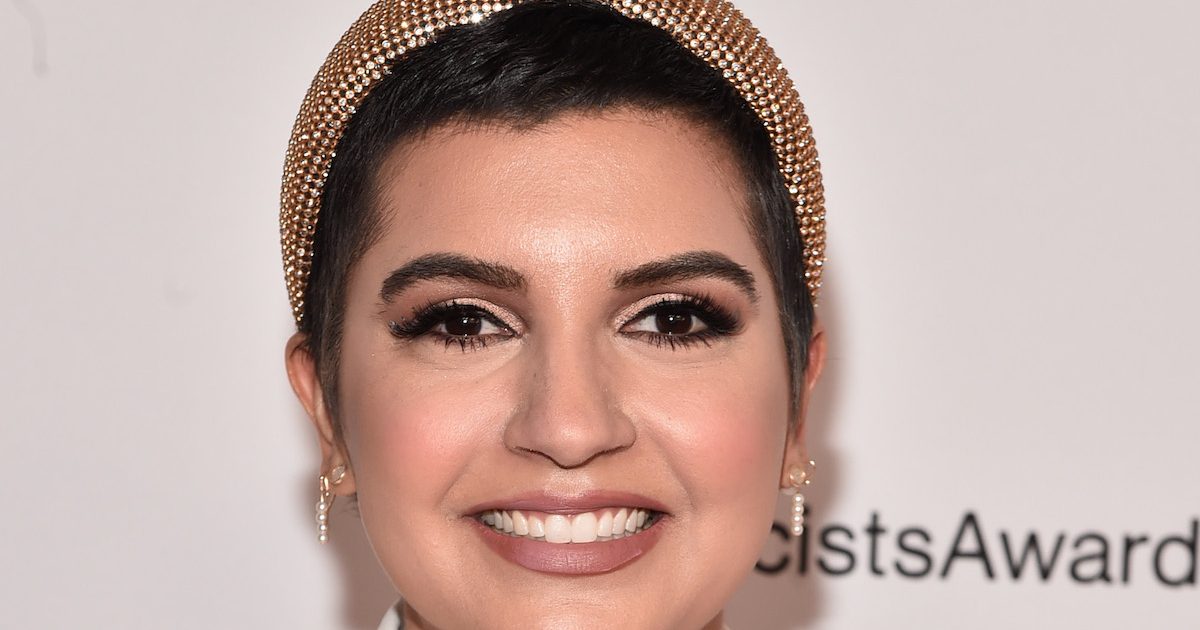One-Year Chemo Anniversary
- TV news reporter Amanda Salas competed chemotherapy for non-Hodgkin Lymphoma one year ago, and her hair is growing back.
- Non-Hodgkin Lymphoma is a type of blood cancer which begins in a specific kind of white blood cell called a lymphocyte.
- Hair loss is a common side-effect of chemotherapy, but cold caps can slow down the process.
Related: Blood Cancer is Different From Other CancersSome Treatments Are, Too
Read MoreCelebrating End of Chemo
Now declared in remission, Salas is looking back and sharing the overwhelming emotions she felt while ringing that bell. “My heart was hopeful and emotional from the journey,” Salas wrote. “My mind was ready to start thinking about the future. My soul was grateful for all the support, love, and amazing care. One year ago. Today feels like a second birthday. A second chance. A second I'll never forget.” https://www.instagram.com/p/CGSdwyVlrj7/Due to the amount of chemotherapy, Salas lost her brown locks into her treatment. Hair loss is a common side-effect to chemo, and typically occurs four weeks into starting the treatment. Since completing chemo, Salas has shared photos of her hair growing back, celebrating each inch as it grows. Now, Salas has achieved the hairstyle she’s been waiting for an afro. While showing off her new look, Salas took it back to the 70’s by jamming out to a Deff Leppard soundtrack and shaking her new curls without abandon.
https://www.instagram.com/p/CGYPkAjl1P8/
Slowing Down Hair Loss During Chemo
Chemotherapy causes you to lose your hair because this treatment targets, and eliminates, cells quickly this includes cancer cells, healthy cells, and hair cells. Hair loss isn’t subjected just to the scalp, a person’s eyebrows can also fall out. This can take a serious toll on someone’s self-esteem, but there are resources for those who don’t want to rock a bald look such as wigs. Plus, after completing treatment, your hair will slowly start to grow back.
Hair loss is often an unavoidable side-effect when starting chemotherapy, but there are ways to slow down the process. Cooling caps, also known as cold caps, helps constrict blood flow to the scalp and limit the amount of circulating chemotherapy reaching the hair follicles. This protects them from some of the chemo's damaging effects, but it’s important to remember that this just slows down the process, not prevents it entirely.
"There are multiple companies that can provide these caps, and they all have their own data as to how efficacious they are," Dr. Stephanie Wethington, a gynecologic oncologist at Johns Hopkins University, tells SurvivorNet. “In my experience they do help. They don't eliminate hair thinning, but they seem to help."
Dr. Stephanie Wethington explains how you can slow down hair loss during chemotherapy
Coping With Hair Loss
Going through chemotherapy is difficult enough, but watching you lose your hair can really take an emotional toll on someone. Some survivors have said they viewed hair-loss is the ultimate representation of a cancer patient, and it took a serious toll. Experts acknowledge how this process can impact their patient, and say it’s recommended that they allow their patient to grieve initially.
“Hair loss is a big transition for folks,” Laurie Ostacher, a medical social worker at Sutter Bay Medical Foundation in the San Francisco Bay Area, tells SurvivorNet. “I think our classic image of a cancer patient is someone who does not have any hair. There’s a lot of grief that comes along with a cancer diagnosis. You’ve often lost your previous health status as an otherwise healthy person. Then, losing your hair can feel like another loss, and so really helping folks grieve that loss so that they can move on. I think the more we try and push that away and say, ‘oh, it doesn’t matter,’ it tends to stick around a little longer.”
Related: Complete Guide to Wigs for Cancer Patients: Cost, Types and Where to Buy
Allowing some to acknowledge their grief can lead to closure in the end. After a while, Ostacher says patients get use to not having hair, and are able to move on throughout the treatment process. Some people may choose to own their new bald look, while others may opt for wearing a wig, scarf, or cut it before it falls out. Either way, remember it’s only temporary.
Laurie Ostacher says it’s okay to grieve after losing your hair
Learn more about SurvivorNet's rigorous medical review process.


